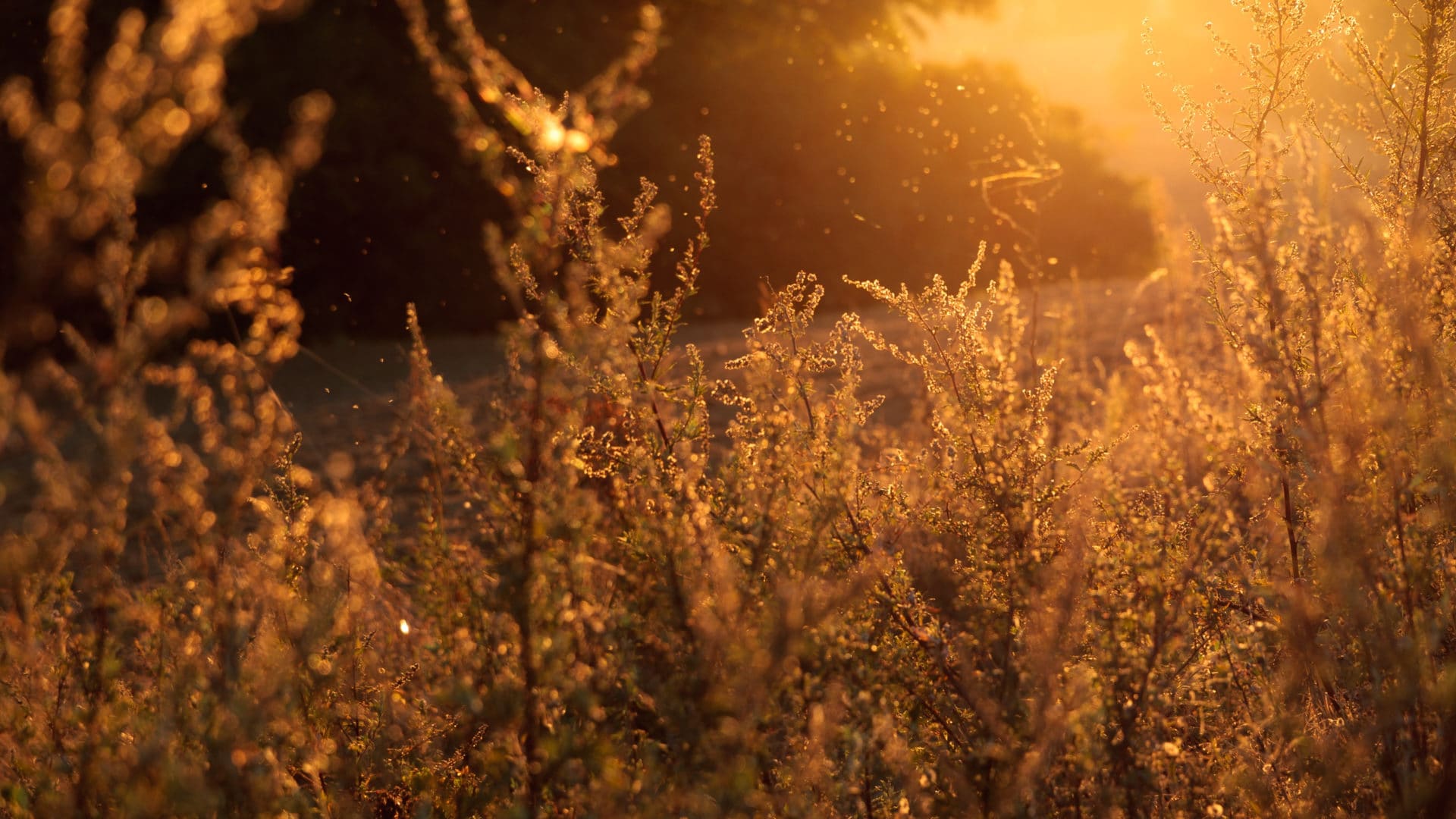Spring is a beautiful time of year. The sun is finally shining, the snow is finally melting, and the kids are finally where they belong: outside, running around.
And yet, along with the dazzling sunshine, the brilliant colors of flowers in bloom, and the delightful sounds of children at play, springtime also brings with it a highly unwanted guest: pollen.
This powder-like substance is produced by plants in order to fertilize other plants of the same species. While some plants — such as those that produce colorful, showy flowers — rely solely on insects and pollinating animals to carry the pollen from plant to plant, the real problem comes with those that are wind-pollinated. They generally have inconspicuous flowers and can drop copious amounts of pollen into the air, wreaking serious havoc on our sinuses and respiratory tracts.
The good news is that there are several things you can do to not only reduce the severity of your springtime symptoms, but also minimize your exposure to this misery-inducing allergen. These tips go beyond the common, run-of-the-mill advice we’ve all heard at one point or another — you know, like take your anti-histamines, vacuum your house, or just don’t go outside when the pollen count’s high. These are tips you’ve probably never even heard of before.
Here are 10 lesser-known hacks you can do to combat allergy season:
1) Limit the Use of Hair Sprays and Gels
“Fun” fact: the static electricity produced by your hair makes it an excellent pollen magnet. (Bet you didn’t know that one!) Add sticky hair care products like sprays and gels, and you’ve got double the trouble.
Instead, try a leave-in conditioner that will coat your hair, making it harder for pollen to stick to. If you don’t have a leave-in conditioner, take this opportunity to visit your local pharmacy or beauty supply store and pick out a few new products to try out.
(Yes, that’s right: you can FINALLY use your seasonal allergies to your benefit!)
2) Rinse Your Nasal Passages
A favorite at-home remedy of ear, nose and throat doctors and allergists alike, nasal saline rinses are an easy and extremely effective way to rid your sinus cavities of pesky pollen, as well as any other unwanted trespassers.
Nasal irrigation kits, such as “neti pots,” can be found over the counter in most pharmacies. Once you get the hang of it, they are easy to use — just make sure you read the instructions carefully when prepping your equipment.
[READ: “Here Are the F.D.A.’s Guidelines for Safe Neti Pot Use“]
3) Limit Your Meat Consumption
A study conducted by Richard Rosenkarnz of the University of Western Sydney showed a positive correlation between meat intake and the prevalence of seasonal allergies like hay fever and asthma.
Specifically, the study points to the Western diet — namely, one that includes high intakes of red meat, saturated fat and refined grains, combined with low intakes of whole grains — as a significant contributor to impaired lung function, increased asthma prevalence and worsened asthma control.
So, load up on your veggies and be mindful of how much meat you consume on a weekly basis!
4) Don’t Forget About Your Car
Before pollen gets a chance to completely cover your car, change its air filter. A clean filter will more efficiently trap pollen, bacteria and dust, preventing all this crud from entering your car’s air conditioning and ventilation systems.
Once you’re inside your car, choose the re-circulating air setting to keep the already-filtered air circulating as you drive.
(And don’t forget to keep those windows up!)
5) Eat More Turmeric
Sounds a little random (and yucky if you don’t have a fondness for this ingredient), but hear me out.
Apparently, turmeric is a natural decongestant, antihistamine and anti-inflammatory. In fact, it possesses properties that have been shown to fight many allergic responses. According to a study published in Molecular Nutrition & Food Research, curcumin, the primary ingredient in turmeric, inhibits the release of histamine from a type of white blood cell, called mast cells. In other words, tumeric can help to kept the histamines at bay, which will reduce those nasty symptoms you feel when your body is responding to an allergic stimulant.
When it comes to cooking, turmeric is pretty versatile ingredient and has many uses. Mix it in with your scrambled eggs, use it in soups and stews, add it to rice, or even blend it into a smoothie. If you don’t feel like blending it into your food, you can also purchase curcumin over the counter in capsule form.
6) Designate a “Clothes Quarantine Area” for Your Family’s Pollen-Covered Clothing
Use your home’s mudroom, foyer or entryway to shed your outermost articles of clothing, including shoes, socks, hats, and jackets. Or, even better: take it all off.
Just keep a few bathrobes in this designated area so you don’t find yourself (or your children) running naked through the house on the way to a change of fresh clothes.
7) Plant an Allergy-Friendly Garden
Believe it or not, but there are “good” pollen plants and “bad” pollen plants. (And here we were thinking that ALL pollen plants were evil.) Knowing which are which before you plant your garden can be the difference between a sneeze-free outdoor zone and one that requires a box of tissues and a trash bin.
Plants to avoid:
- Amaranth
- Black-Eyed Susan
- Dahlia
- Lilac
- Privet
- Sunflower
- Zinnia
Plants to go for:
- Azalea (but not of the “Iggy” variety)
- Begonia
- Bougainvillea
- Boxwood
- Bulbs (e.g., tulips, iris, poppies and daffodils)
- Gladiolus
- Hibiscus
- Orchid
- Periwinkle
- Trees (e.g., palms, pines, firs and dogwoods)
- Yucca shrubs
8) Wipe Down Your Pets When They Come Indoors
Pets bring pollen indoors by way of their paws and fur. Keep a rag within reach of your front and back doors so that you can give Fido a quick once-over when he comes in. Be sure to get the legs, between the little toes and on top of his feet.
Also, try to give him a bath once a week, if possible. This will just help you maintain control over the amount of pollen he brings into the house. (And if you hate giving your dog a bath, consider making a standing appointment with your dog groomer during pollen season.)
9) Add a Few Drops of Eucalyptus to Your Evening Shower
Before bed, wash off the pollen and ease your symptoms at the same time with a eucalyptus shower.
This essential oil is antibacterial, antifungal, antimicrobial, antiviral and anti-inflammatory. And as if you couldn’t already love it enough, it’s ALSO a decongestant. It’s particularly effective in opening up the lungs and sinuses, which helps improve air circulation and thereby reduces your allergy symptoms.
10) Be Strategic About Opening Your Windows
The mild temperatures of spring tempt us to open the windows to let soft breezes flow through our house. But don’t fall for it: it’s a trap. Think of pollen as the Spartans who hid in the Trojan Horse: when you let that enticing breeze in, you’re also letting pollen invade your home, too. To prevent this, almost all experts advise us to keep our windows shut and turn on the AC.
That being said, there are a few exceptions to this rule that they don’t always tell you about. If you really want to take in some of that beautiful springtime air, wait until after it has rained, or when dew is still on the ground. These are the times when pollen counts are at their lowest.
So, go ahead and open the windows from time to time — just be mindful of when you’re doing it.





